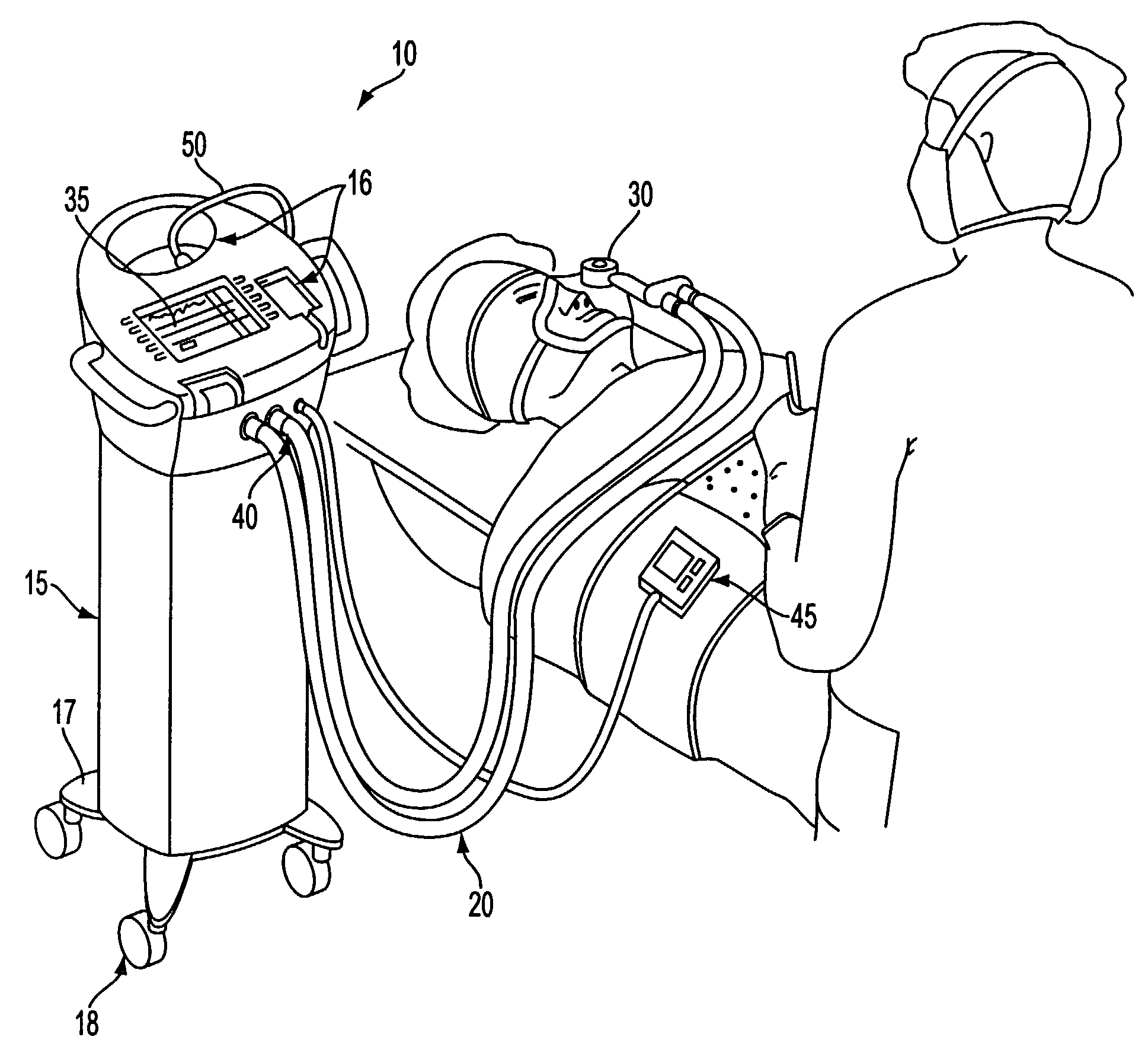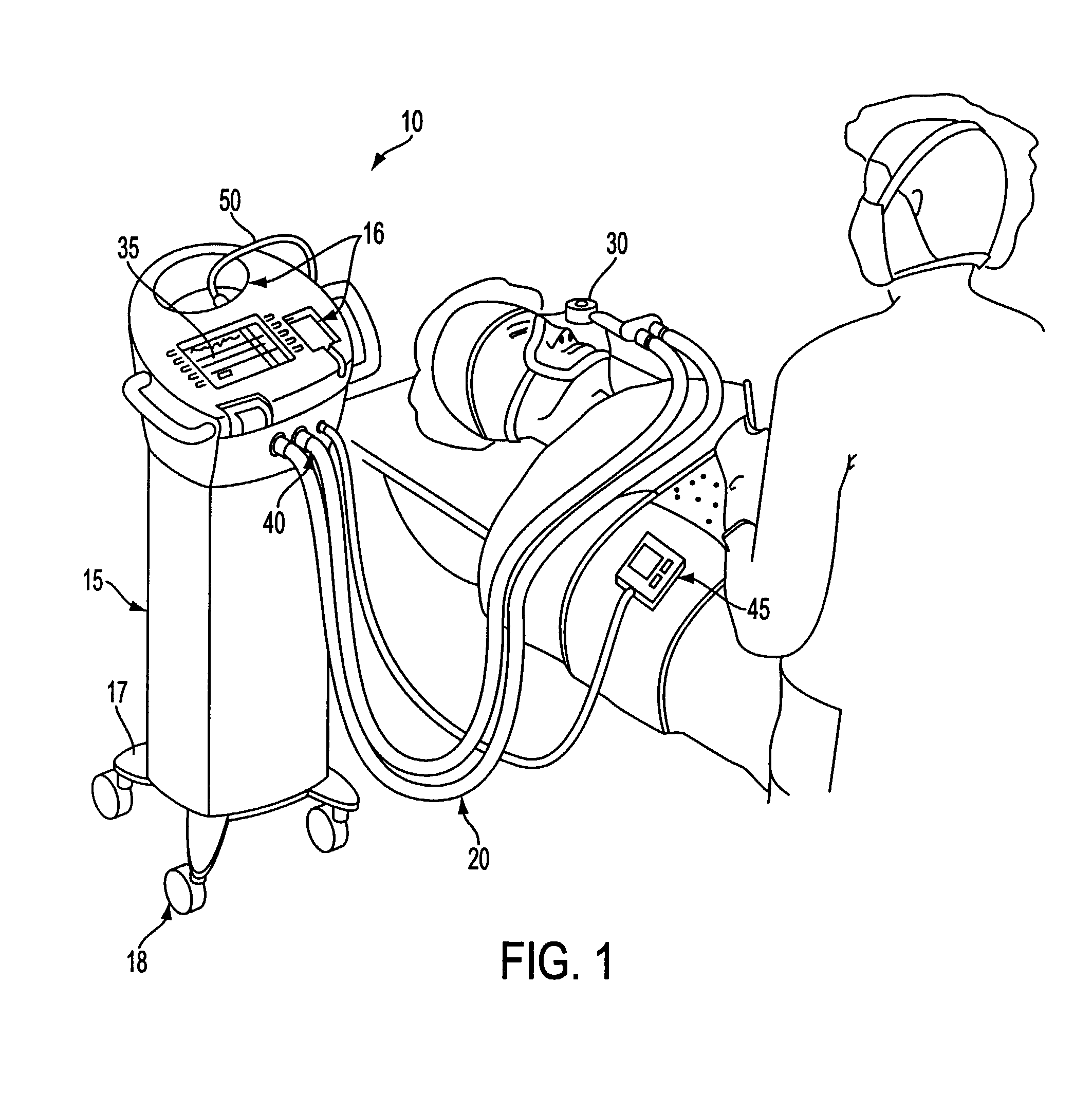Apparatuses and methods for automatically assessing and monitoring a patient's responsiveness
- Summary
- Abstract
- Description
- Claims
- Application Information
AI Technical Summary
Benefits of technology
Problems solved by technology
Method used
Image
Examples
Embodiment Construction
[0079]The embodiments illustrated below are not intended to be exhaustive or to limit the invention to the precise forms disclosed. The embodiments are chosen and described in order to explain the principles of the invention and its applications and uses, and thereby enable others skilled in the art to make and utilize the invention.
[0080]FIG. 1 shows a care system 10 constructed in accordance with this invention, providing sedative, analgesic and / or amnestic drugs to a conscious, non-intubated, spontaneously-ventilating patient undergoing a medical or surgical procedure by a procedural physician. The system 10 has a generally columnar housing 15 with various storage compartments 16 therein for storage of user and patient interface devices, and a base 17 supported on castor wheels 18. A drug delivery system 40 delivers a mixture of one or more gaseous sedative, analgesic or amnestic drugs in combination with oxygen (O2) gas to a patient, and includes a one-way airway circuit 20 conn...
PUM
 Login to View More
Login to View More Abstract
Description
Claims
Application Information
 Login to View More
Login to View More - R&D
- Intellectual Property
- Life Sciences
- Materials
- Tech Scout
- Unparalleled Data Quality
- Higher Quality Content
- 60% Fewer Hallucinations
Browse by: Latest US Patents, China's latest patents, Technical Efficacy Thesaurus, Application Domain, Technology Topic, Popular Technical Reports.
© 2025 PatSnap. All rights reserved.Legal|Privacy policy|Modern Slavery Act Transparency Statement|Sitemap|About US| Contact US: help@patsnap.com



